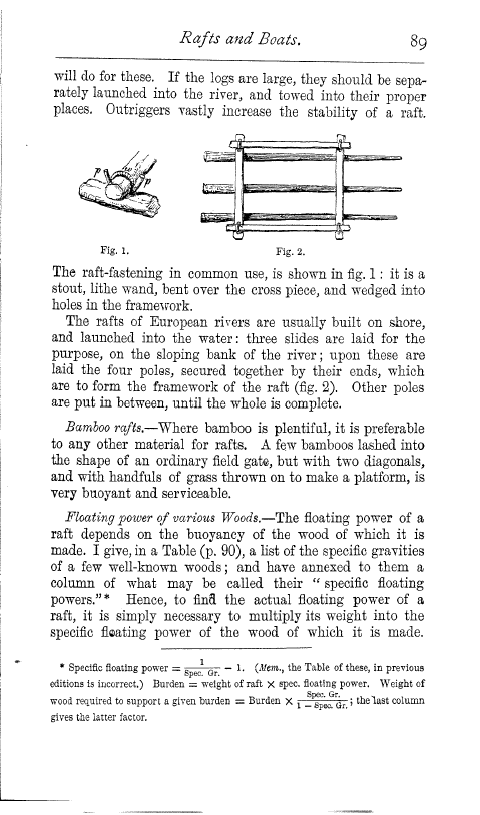Rafts and Boats. 89
will do for these. If the logs are large, they should be separately launched into the river, and towed into their proper places. Outriggers vastly increase the stability of a raft.
Fig. 1. Fig. 2.
The raft-fastening in common use, is shown in fig. 1 : it is a stout, lithe wand, bent over the cross piece, and wedged into holes in the framework.
The rafts of European rivers are usually built on shore, and launched into the water: three slides are laid for the purpose, on the sloping bank of the river ; upon these are laid the four poles, secured together by their ends, which are to form the framework of the raft (fig. 2). Other poles are put in between, until the whole is complete.
Bamboo rafts.-Where bamboo is plentiful, it is preferable to any other material for rafts. A few bamboos lashed into the shape of an ordinary field gate, but with two diagonals, and with handfuls of grass thrown on to make a platform, is very buoyant and serviceable.
Floating power of various Woods.-The floating power of a raft depends on the buoyancy of the wood of which it is made. I give, in a Table (p. 90), a list of the specific gravities of a few well-known woods ; and have annexed to them a column of what may be called their " specific floating powers." * Hence, to find the actual floating power of a raft, it is simply necessary to multiply its weight into the specific floating power of the wood of which it is made.
* Specific floating power = spec. Or. - 1. ;.hem., the Table of these, in previous editions is incorrect.) Burden = weight of raft X spec. floating power. Weight of
wood required to support a given burden = Burden X Spec. . ( ; the last column 1 - Spat. or.
gives the latter factor.

